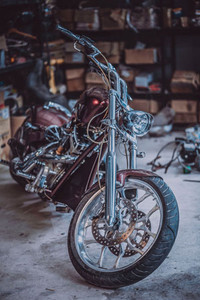How to Winterize Your Motorcycle in Five Steps
Posted by West End Motorsports on Feb 26, 2019
Whether riding your motorcycle is a pleasure you reserve for warm weather or your climate creates conditions that make riding in winter impossible, winterizing your bike is essential for keeping it ready to ride again in better weather. If you need help with the process, here’s a five-step guide to show you how to winterize your motorcycle.
1. Add Fuel Stabilizer to the Gas Tank
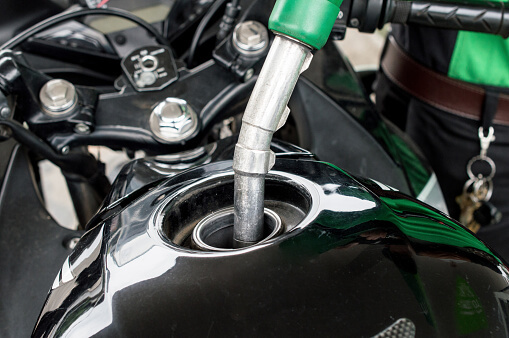
You may have heard that winterizing a bike requires draining its gas tank. That isn’t true. The point is to prevent the gas from degrading and becoming unfit for use. This can be prevented by adding fuel stabilizer to the existing fuel, keeping the fuel fresh for up to 24 months depending on the brand. Simply choose a stabilizer made for your bike model and year, then follow the product’s instructions. Adding stabilizer costs less than refilling an empty tank when you’re ready to ride again.
2. Replace the Oil and Install a New Filter
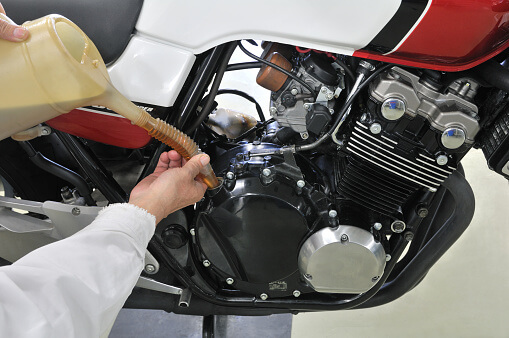
Replace the oil and the oil filter to keep oil sediments from forming a sludge that clogs receptacles in your bike’s oil system. Then, start your bike and let it idle for a few minutes to make fresh oil replace what’s currently in the system. Regardless of the schedule for oil and filter replacements when your bike is in normal use, make sure you replace them before retiring your bike for the winter. It prevents the hassle of flushing and refreshing your oil system months later.
3. Remove the Battery and Maintain its Charge
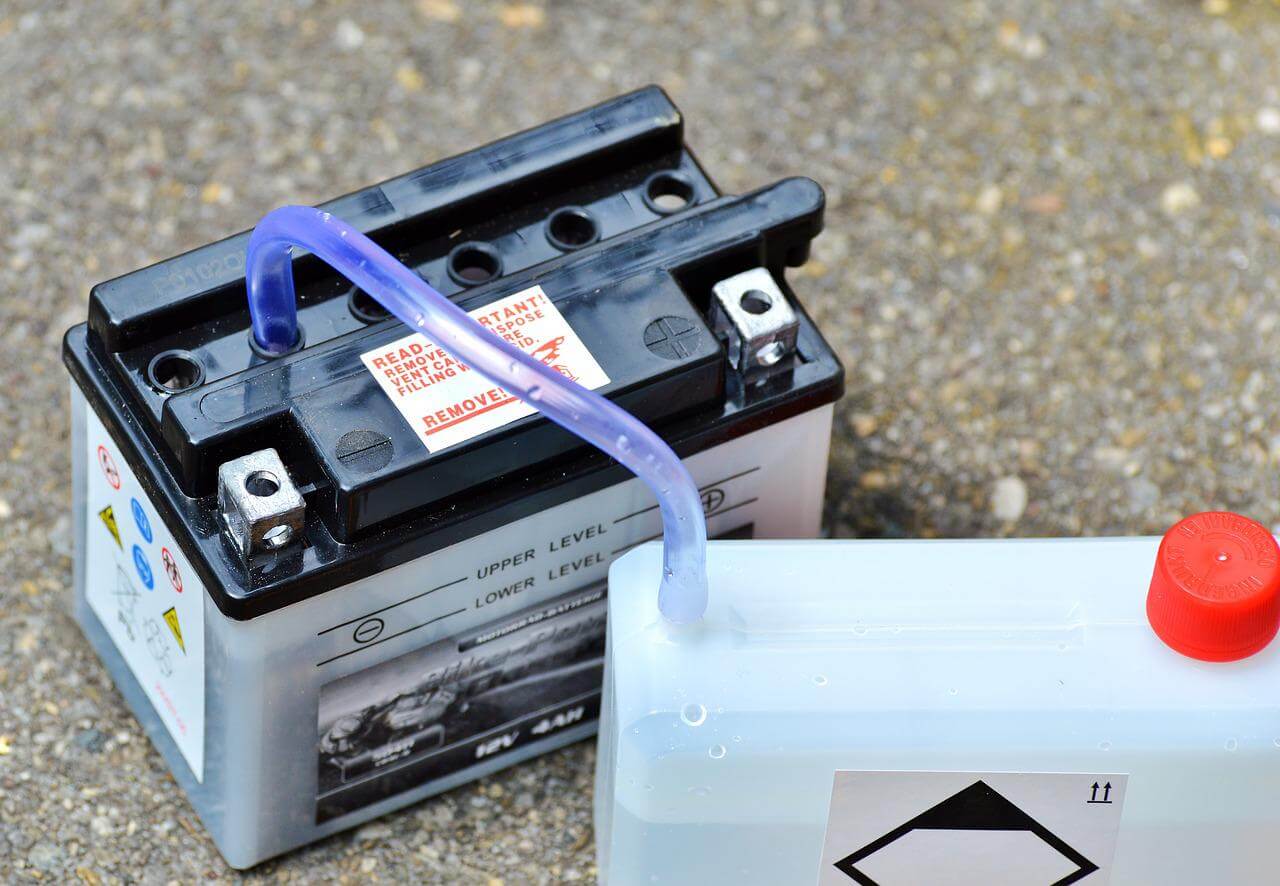
The third step for how to winterize your motorcycle is removing its battery and storing it in a clean, dry place. Plug the battery into a battery charger to maintain charge until the battery is re-installed in the spring. Running a complete recharging session once a month is ideal. If you don’t have a charger, it’s a worthwhile purchase for a bike that you plan to ride for years.
4. Wash, Then Apply Wax and Lubrication
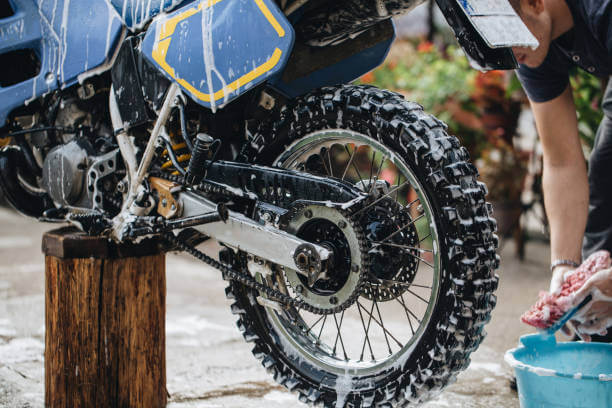
Dirt and debris dim the paint on your bike and can corrode the paint if the accumulations remain for months. Before parking your bike for the cold season, give it a final wash and generously apply wax to the paint. Then, apply lubrication to all points that need it for standard maintenance. These steps preserve your bike’s paint job and the functionality of its many moving parts.
5. Suspend the Tires to Stop Moisture Damage
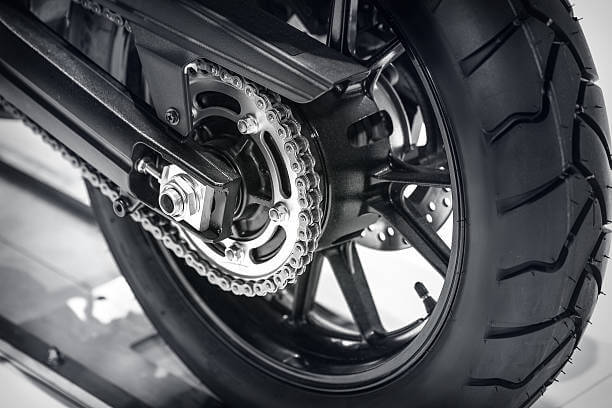
The final step for how to winterize your motorcycle is suspending the tires. The floor of the area where you park your bike may feel dry to the touch, but it could still have enough moisture to cause rubber to develop weak spots at the points where it remains in continual contact with the floor. If your bike has a center stand that lifts its tires slightly above the ground, applying the stand to keep the tires suspended is all you need to do to extend the life of the tires.
Winterize Your Bike and Await Warm Weather
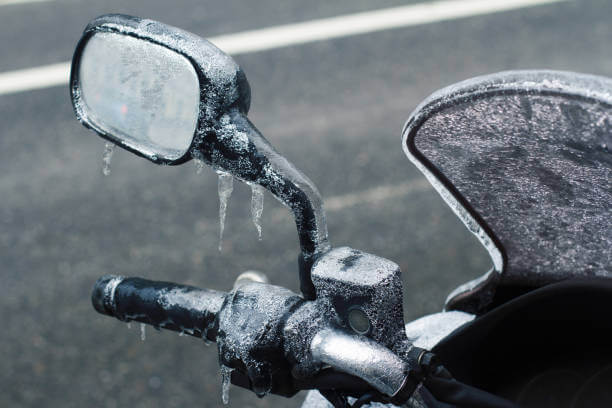
Winterizing a motorcycle requires some time and money, but not doing it could mean that you spend more of each when you finally get it ready to hit the road. If you love riding your motorcycle, properly winterizing it is a top priority for keeping your bike in top shape for years to come.





















